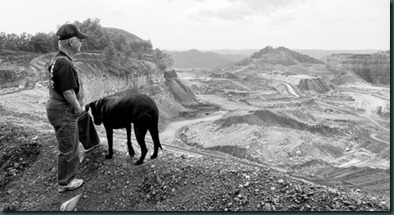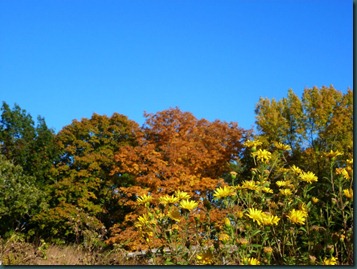Meet Ryan Boyette
The skinny is, you can support Ryan by making a contribution on
Kickstarter.com.
And now, here’s why you’ll want to:
Ryan is an ordinary American who grew up in Florida. He is also a Christian, and he went to Sudan as a relief worker for the Christian organization,
Samaritan’s Purse. While working among the Nuba people, he met and married a Sudanese woman, who is pictured here with him.
Sudan is a large country, approximately the size of the eastern half of the USA.
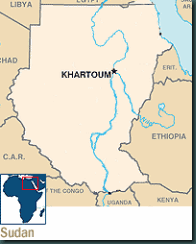
When the Colonial powers divided up Africa into distinct countries, they often did so without regard to traditional tribal boundaries. Sudan is an example. The northern part of Sudan is desert and is inhabited by light skinned, Muslim people of Arabic descent. The southern part of Sudan is green and inhabited by dark skinner, largely Christian people of traditional tribal descent. Underneath the fertile soil of the south, is oil. In a gross oversimplification, the northern, Arabic peoples gained control of the military and of government, and for twenty years conducted a campaign to remove the tribal people who were inconveniently (by virtue of living there) blocking unbridled access to the oil reserves underneath their traditional pastoral lands.
This was the context in which the genocide in Darfur took place. At its worst, this campaign of removal turned into a campaign of eradication, resulting in the extermination of the people of Darfur. According to U.N. sources, the genocide in Darfur has largely been accomplished.
The resource conflict also resulted in a 20 year civil war in Sudan between the north and the south. At the end of this 20 year “civil war,” a peace deal was brokered in which the Khartoum government allowed the people of South Sudan to declare independence by way of a referendum. In July of 2011, South Sudan became the world’s newest country, as its people voted to sever ties with the government of Khartoum. Unfortunately, woe to those dark skinned peoples of tribal descent who were sympathetic to (and supported) secession but who have the misfortune of now residing north of the line of demarcation.
Now that eradication of the tribal peoples in Darfur is fundamentally complete, the Khartoum government (by all appearances to outside observers) seems to have zeroed in on the dark skinned people remaining in the (northern) Sudanese state of Southern Kordofan state (just to the east of Darfur) as its next target for eradication. The Khartoum government’s enmity toward these peoples is also fueled by the fact that the the tribes in what is now Sudan’s southern border areas sought independence along with South Sudan, but were thwarted by political forces.
The first map, below, is divided into political names, but the second map is very illustrative.

Fundamentally, the areas on the second map that are marked in green, pink, and yellow, are inhabited by dark skinned, tribal and pastoral peoples. And these people have been marked for extermination by their own government.
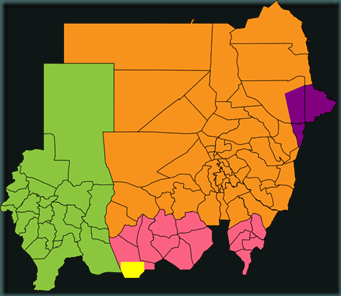
The dark skinned, tribal people have been mostly exterminated from the green areas of this map (Darfur). Now, the focus has moved to the yellow and pink portions: the states of Southern Kordofan, White Nile, and Blue Nile.
Among these inhabitants of South Kordofan, residing in the Nuba mountains, are the Nuba people.
Discussion of the Nuba people brings conversation back to the ordinary guy, Ryan Boyette, the relief worker. When the Khartoum government began its bombing of the Nuban people, Samaritan’s Purse evacuated its workers and told Ryan to get on a plane and leave.
Ryan refused, quitting his job instead so that he could stay behind. He explains that his conscience compelled him, instead, to bear witness to the facts.
Bearing Witness
Bearing witness is a fundamental component of justice, and of peace. The term
Satyagraha , termed by Gandhi, describes the active force of truth and the power of applied loving-kindness, not as a passive means of resistance but as an active spiritual force that confronts evil. The truth is like a mirror, forcing evil to look itself in the face.
In Syria, in Egypt, at Occupy encampments, and elsewhere around the world, people bearing witness have cameras and cell phones, twitter and Facebook, to take photos and to communicate with the outside world, to bear witness to the truth. In Sudan, its infrastructure destroyed by 20 years of civil war, the people don’t have these ways of communicating with the outside world.
Ryan decided to change that.
He stayed behind and is equipping peace warriors with cameras and cell phones. With these, victims can now record what is happening and communicate this to the outside world. Thanks to Ryan, when a bomb falls on an elementary school or on a refugee camp, and the Sudanese government denies that it happened, cameras are now in place to record the event and prove to the world that yes, a bomb was indeed dropped on this school.
Speaking Truth To Power
Confronting the world with the truth
Truth telling
In so many words, TRUTH is an essential component of nonviolent direct action. Ryan is a warrior for truth. The world lacks political will to intervene. Yet, by focusing the spotlight on atrocity and making it impossible to deny, Ryan’s work is erecting a shield of shame that is saving lives.
No one says that nonviolent direct action is easy or that it doesn’t have risks. Ryan, now the target of assassination attempts, is clearly putting his life in danger.
What can you do to help?
To pay for operations, Ryan Boyette is hoping for foundation grants, or public donations.
To accept donations, he has set up an account on
Kickstarter.com.
Would you like to make a contribution to help the cause?
![coins_thumb[1] coins_thumb[1]](//lh5.ggpht.com/-AgHwJFImMC0/T0sCE1baeEI/AAAAAAAAAgM/rbFksKTxOhA/coins_thumb%25255B1%25255D_thumb.jpg?imgmax=800)
The minimum donation on Kickstarter is One Dollar. I promised to give each day one action item people can do. Today, this is it.
And finally, with all that said, I’d also like to mention another peace worker who is making Ryan’s work possible. Thanks very much to New York Times writer
Nicholas Kristoff for writing about this and bringing it to the world’s attention. Kristoff’s writing has given Ryan the attention he needs to help raise awareness of this issue.
See two of Nick Kristoff's articles:
Battling Sudan’s Bombs With Videos (February 26, 2012) and
The Man Who Stayed Behind (October 19, 2001)
If you’d like to learn even more, please read the links in this blog post, including:
http://nyti.ms/zSKnNs and
eyesandearsnuba.org
THANKS
An update to this blog post appears HERE
(Note: all photographs are in the public domain)


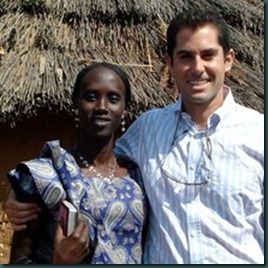


![coins_thumb[1] coins_thumb[1]](http://lh5.ggpht.com/-AgHwJFImMC0/T0sCE1baeEI/AAAAAAAAAgM/rbFksKTxOhA/coins_thumb%25255B1%25255D_thumb.jpg?imgmax=800)
